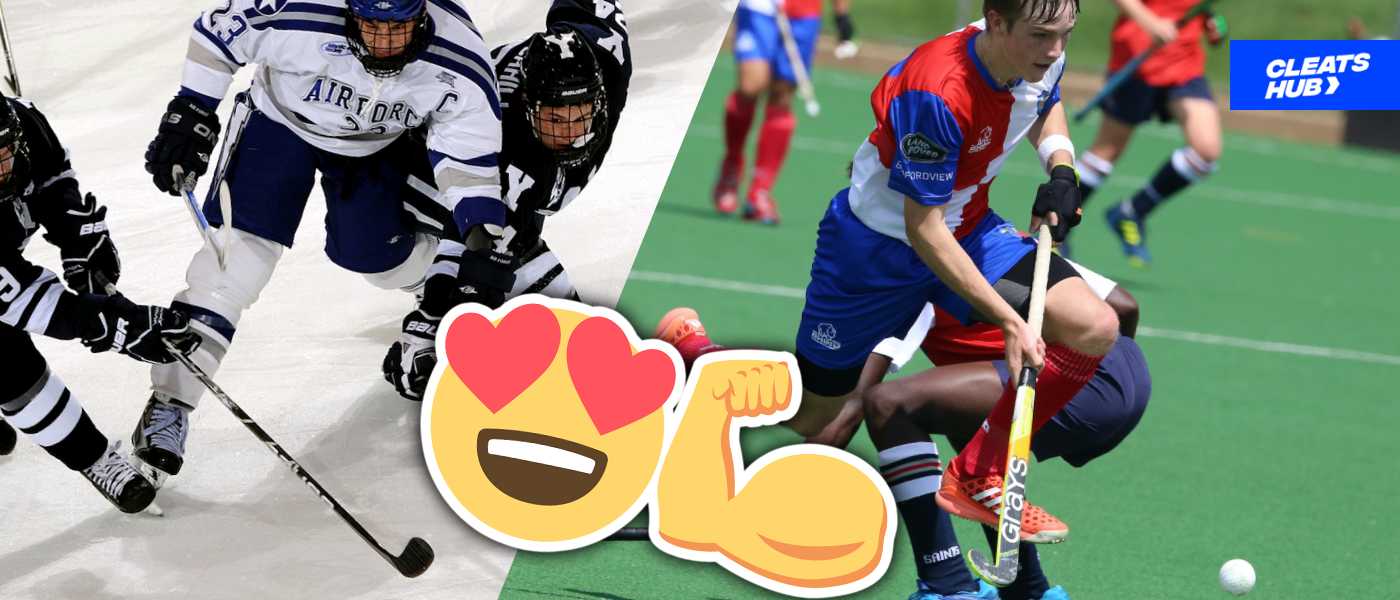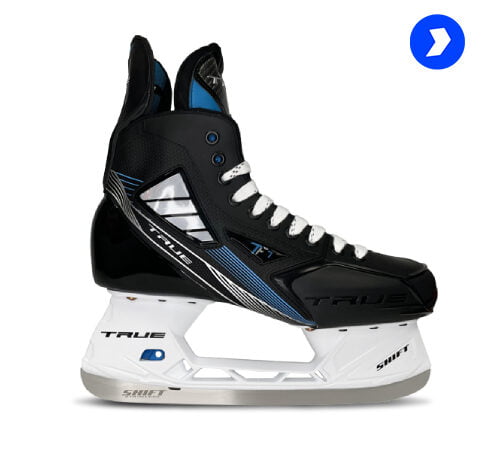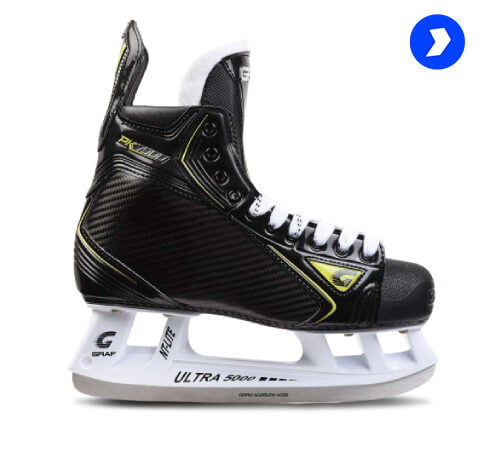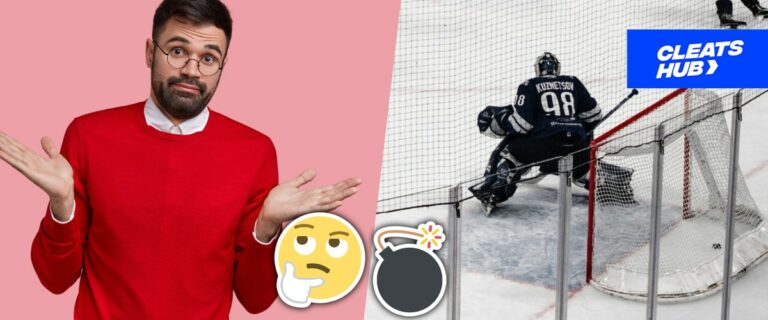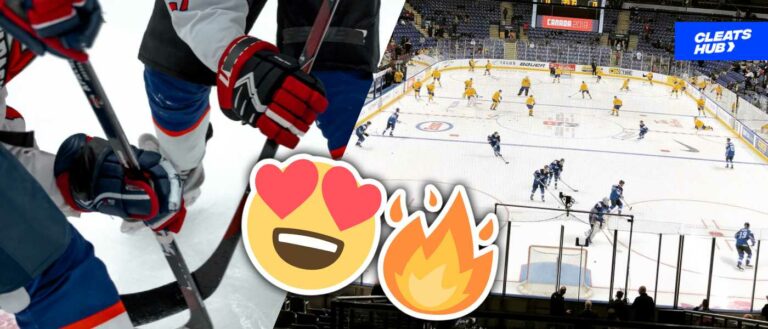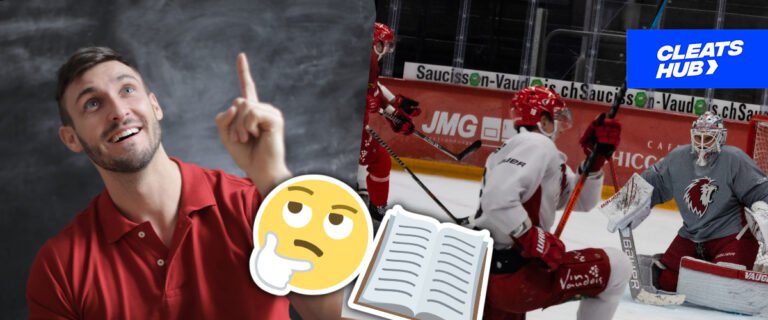5 Differences Between Ice Hockey And Field Hockey
The word “hockey” can signify different things to different people depending on where they are from or where they currently reside. The term “hockey” only applies to ice hockey in North America, including nations such as Canada, Finland, Russia, the USA, Switzerland, and more.
However, the name “hockey” refers to the game of field hockey in nations like Australia, the Netherlands, Germany, and India, among others.
However, what is ice hockey and field hockey, and how do these two specific sports differ from one another visibly?
In today’s article, we will be examining this.
Dissimilarities Between Ice Hockey And Field Hockey
Even though both sports go by the name “hockey”, there are so many dissimilarities between them. However, today I have grouped the differences in the sport into five sections based on the major and most evident contrasting traits of the two sports.
1. Surface Of Playing The Game
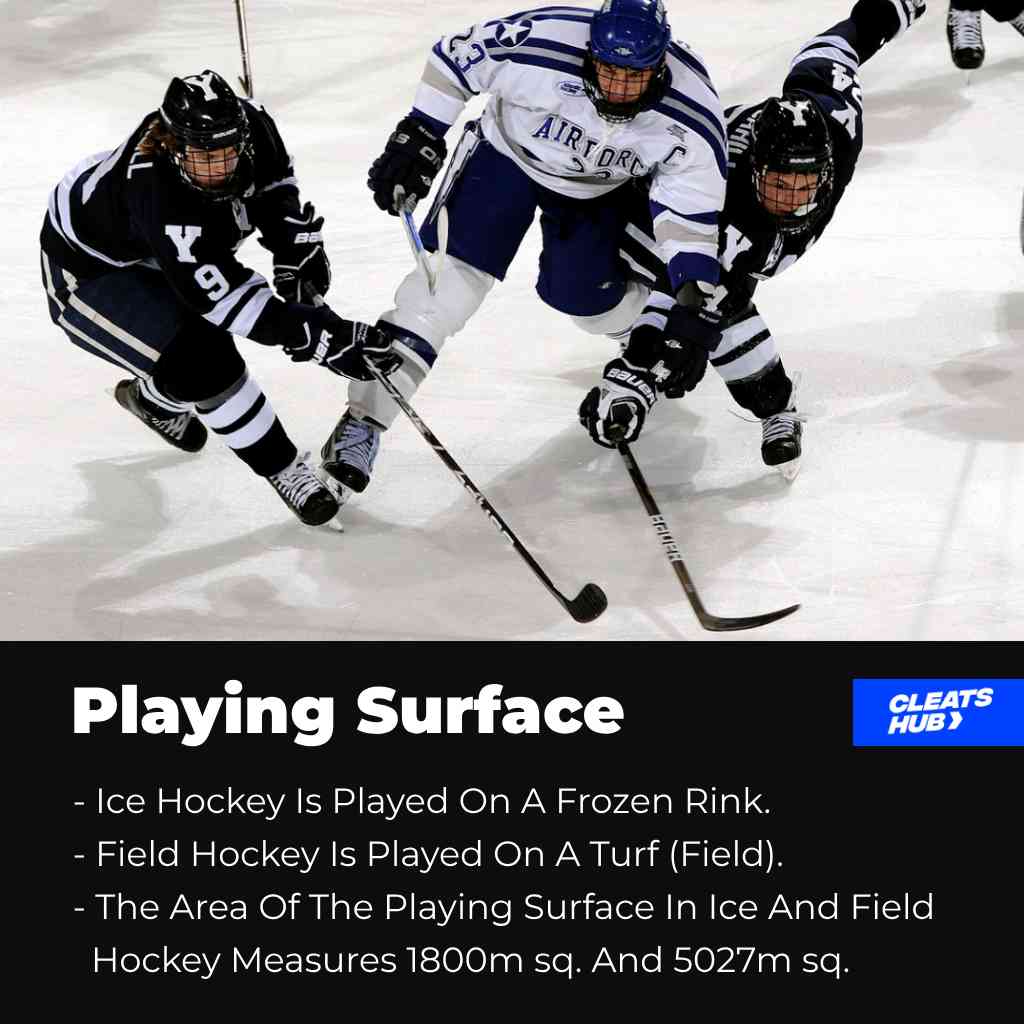
The playing surface for both games comes first.
On an ice surface known as an ice hockey rink, the sport of ice hockey is played. The ice rink can be either an artificially constructed indoor ice hockey rink that is maintained to keep play going, or an outdoor ice hockey rink that is built during the winter months.
The dimensions of an ice hockey rink are 200 feet by 85 feet. However, this is especially true for rinks used by the NHL and a few other leagues in North America. Nevertheless, when it comes to ice hockey rinks used for international competitions organized by the IIHF (International Ice Hockey Federation), they are roughly 200 feet by 100 feet in size (more accurately, 60m by 30m).
Now, things change significantly when we switch to field hockey. The divergent characteristics begin with the fact that field hockey is played on a field known as a hockey pitch rather than on ice.
In contrast to ice hockey, field hockey is played on grass, a synthetic pitch, watered turf (in other to reduce friction), or a board surface indoors.
The differences in the playing surface extend beyond only the way they are made to include their size as well. A hockey rink measures 91.5m by 55m in size (100 yd by 60 yd)
Field hockey’s pitch has a larger surface area for playing the game, which measures 5,027 square meters (1.24 acres). This is particularly larger when compared to the 1,800 square meters of the ice hockey rink.
2. Difference In Game Equipment

Next is the difference in the materials of the game. There are a number of differences in the equipment used in both field and ice hockey. However, for this article, we will be looking at the stick, the ball, and the goal net.
The Stick
Even though the stick is the primary equipment of play in both variations of hockey, the sticks in both sports differ in size, shape, and means of handling it.
When it comes to ice hockey, the stick is designed to have two sides with a flat surface. In addition, a long, curved blade is visible at the foot of the stick and it is made to allow for effective puck handling on the ice. In field hockey, the same cannot be said of the stick.
The stick for field hockey similarly has two sides, but one of them is flat while the other is rounded and curvy (having a convex meniscus-like shape).
Depending on whether a player is right-handed or left-handed, ice hockey sticks can be carried in any manner. It follows that your playing hand can be changed from the fixed hand that will be on the stick’s shaft and knob.
But, in field hockey, the left hand must always be the hand on top of the stick (at the knob), while the right hand must grip the stick’s shaft at a comfortable location.
The Puck Vs The Ball
If you have seen an ice hockey game and a field hockey match, you will notice that the main item of focus in the game (which are the balls) is not made the same. Neither do they look alike in any way.
In ice hockey what the stick is used to play is called a puck. The puck is a flat one-inch thick disc-like ball. It has two flat faces and a diameter of three inches. A puck in ice hockey is made from vulcanized rubber and it is black in color.
In all ice hockey leagues and competitions, the puck is always black. Due to the contrast it makes with the ice rink’s white tone, this color was chosen to aid in visibility.
Field hockey on the other hand popularly uses a dimple ball in their games. The ball is usually white with small uniform dimples scattered evenly around the entire ball. In contrast to the black puck in ice hockey, field hockey balls are spherical and they also come in colors such as white, yellow, orange, and pink.
Field hockey balls have dimples to promote speed and improve traction on the turf while playing on a wet surface. The bright colors are meant to make the puck visible, however, depending on the surface color and light level, they may alter.
The most popular color for the field hockey ball, nevertheless, is white.
The Net
The dimensions of the goal net in ice hockey and field hockey are another obvious distinction. Compared to the field hockey playing surface, the ice hockey rink is significantly smaller.
Also, the dimensions of the goal net fluctuate significantly from field size in a proportional manner.
Firstly, in ice hockey, the net has a dimension of 6ft by 4ft (72 inches by 48 inches). This means that the net has a width of 6ft and a height of 4ft. The size makes it easier for goalies in ice hockey to cover the net from shots from the opposing team and it also resonates well with the small size of the rink.
Since we are talking about the resonance between the size of the goal net and the playing surface, it will be off if a sport with a field that is almost three times the size of an ice hockey rink possesses a goal net of the same size.
Therefore, in contrast to the 6×4 ft dimension in ice hockey, the dimension of the net in field hockey is 12ft by 7ft (3.66m by 2.16m). This means that the dimension of the goal net is double with a width of 12ft and a height of 7ft.
3. Difference In Players’ Equipment

Another difference between the two sets of sports is in the dress and amount of body gear worn to games. Since they are played under different sets of conditions, the dressing of players will be adapted to their specific conditions.
The Body Gear
Let’s start with ice hockey body armor. Because of the following, ice hockey players wear heavy, protective equipment:
- The rink’s temperature must be maintained to keep the ice in good condition.
- To safeguard themselves from injuries and collisions
Because of its high speed on the ice, ice hockey is prone to collisions between players and the puck. Hence, they wear protective rigs to ensure the safety of players on the ice.
Some of the gears worn include:
- Helmet
- Jersey
- Shoulder Pad
- Elbow Pad
- Knee Pad
- Jockstrap
- Shin Guard
- Mouth Guard
- Chest Protector
- Gloves
As for field hockey, although players also use protective rigs, it is not as much as that of ice hockey. The equipment worn by players in field hockey includes:
- Jersey
- Shin Guard
- Mouth Guard
- Elbow Protector
- Leg guard
- Face mask
However, for protection, the goalies in ice and field hockey, wear an extra set of protection. For example in field hockey, the goalie wears a helmet, an extra set of padding for his shoulders and chest, and also a hand pad for stopping the ball.
The Skates Vs Cleats
To be able to move on the ice, ice hockey skaters make use of skates instead of cleats used in field hockey. Using skates allows players to move on ice more easily and faster. This is also part of what makes ice hockey a fast-paced game.
Whereas, in field hockey, cleats are worn by players to move on the ice. Cleats allow for better stance and grip of the playing surface.
The Helmet
Every ice hockey player is required to wear a helmet. When ice hockey first started, players did not wear helmets, which caused concussions and other injuries to the face and skull.
Helmets were later incorporated into the game and are now a crucial component of the rule. Players who purposefully take off their helmets during games are fined and given a mild penalty.
Only the goaltender wears a helmet, though, in field hockey. Nonetheless, players are permitted to put on a face mask or goggles to protect their face and eyes.
4. How It Is Played
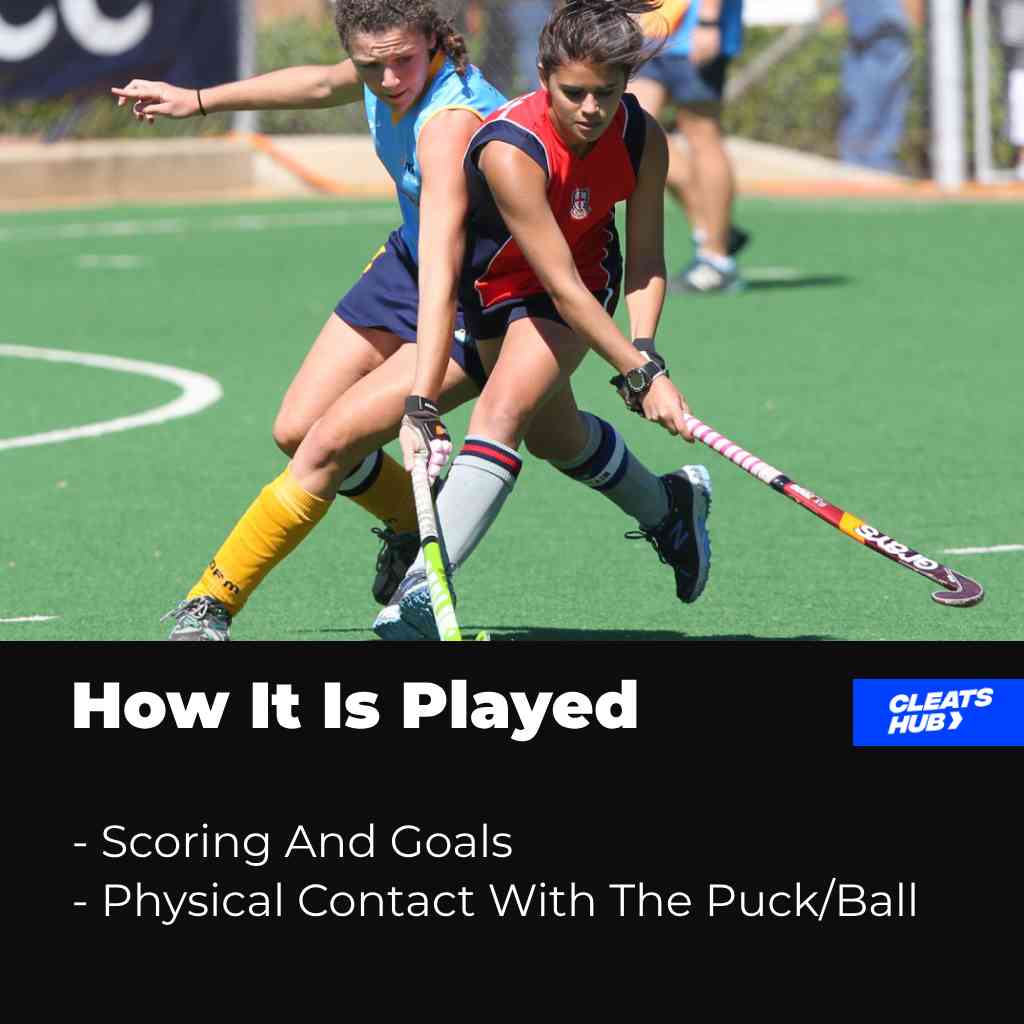
When we look at the differences in how the two sports are played, more differences become visible between the two sports.
Scoring And Goals
The basic objective of every sport’s game is to score a goal. A goal can be scored in ice hockey from any point on the ice. As long as it enters the goal net, whether it is in the offensive, defensive, or neutral zone, it counts as a goal. Nonetheless, ice hockey players must be cautious of offsides and icing, unlike in field hockey.
The situation is different in field hockey, though. The “striking zone” is the only area in field hockey where players are permitted to take shots. The goal net and the area in front of the goaltender are enclosed within a semi-circular which is called the striking zone.
Even if a player’s shot goes into the goal net when it is outside of the striking zone, it is not considered a goal in field hockey.
Physical Contact With Puck/Ball
It is legal for players to make some sort of physical contact with the puck during ice hockey games according to the rules. Players are permitted to catch the puck from the air and to hit the puck with their hands to a player in their defensive zone, for example. Also, players are permitted to kick the puck.
Regarding field hockey, the same cannot be said. The use of any body component to stop the puck’s progress is strictly prohibited in field hockey. This covers standing in the shot’s path to stop with the body or actively stopping the puck with various body parts.
5. Difference In Game Rules

Since the way the game is played differs, it is only appropriate that they way the rules of the game are different.
Duration (Length Of Play Time)
Three 20-minute periods make up the 60 minutes of ice hockey play. The game features two 15-minute intermissions in between these periods.
Field hockey matches also last 60 minutes. It is separated into four halves of 15 minutes each, unlike ice hockey, though. Field hockey has three intermissions, which is still another distinction.
Except during halftime, field hockey intermissions last for two minutes. The first and second quarters, as well as the third and fourth quarters, each have a 2-minute break. However, when it comes to the intermissions between the second and third quarter (half of the game), a 15-minute break is given.
Number Of Players
Ice hockey is composed of six players from each team on the rink. The teams are composed of:
- A Goalie
- 2 Defensemen
- 3 Forwards
There can only be a maximum of six players at any time on the ice from a team in ice hockey. However, the number of players can be reduced when they serve penalty time in the penalty box.
The number of players in field hockey is quite different. In field hockey, each team has 11 players on the ice. The distribution of players works just like the same format in soccer. The formation of the 11 players depends on the formation used by the team.
The names of the position, in field hockey, include:
- Attackers
- Midfielders
- Defenders
- Goalie
In addition, in ice hockey, there are 14 players on the bench who perform shifts and line changes with their teammates. But in field hockey, the number of players on the bench is five.
Penalties And Fouls
The way penalties and fouls are given in ice hockey and field hockey differs from one to another. In ice hockey even if an infraction occurs, it is assessed as either:
- Minor Penalty:
A minor penalty in ice hockey is given for an offense or infraction that is given to actions that are not severe. When a minor penalty is assessed to a player the player will serve a two-minute penalty time in the penalty box. - Major Penalty:
A major penalty is given when a player or players commit infractions that are severe or can cause injuries to a player. In addition, players who are assessed a major penalty serve a penalty time of 5 minutes. - Misconduct Penalty:
Misconduct penalties are more severe penalties for actions that were deliberately meant to injure a player or attack an official of the game. They may result in the ejection of a player from a game and even future games.
However, when we move to field hockey the three punishments for offenses are free hit, penalty corner, and penalty stroke.
- Free Hit:
A field hockey player who is fouled on the field receives a free hit. It is specifically awarded to a player when he gets fouled outside of the striking zone (elsewhere on the field). - Penalty Corner:
When the opposing team’s defense fouls in the striking zone, the player is awarded a penalty corner. The foul must, however, be inadvertent and must not reduce the opponent’s chances of scoring. - Penalty Stroke:
They are awarded to a player when the opposition team’s defense purposefully commits a foul inside the attacking 25 line or inside the opposing team’s striking zone, obstructing a goal or a scoring opportunity.
Conclusion
There is no offside rule in field hockey, unlike ice hockey, which is another significant distinction between the two sports. This indicates that players can pass the ball to themselves from wherever.
Ice hockey can only be played in a cold setting because it uses frozen water (ice). This denotes either at a location where ice naturally occurs or by creating ice artificially in an arena.
The distinctions between field hockey and ice hockey are now complete. I appreciate your reading.
Psstt…. The Top Performing Cleats

